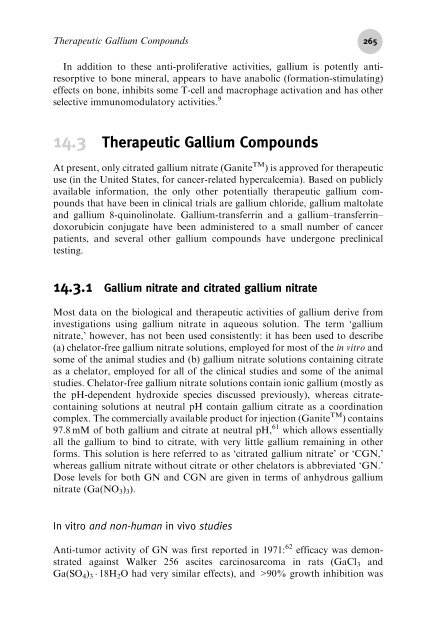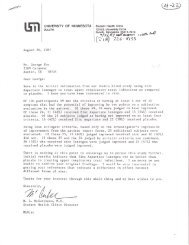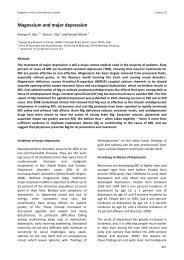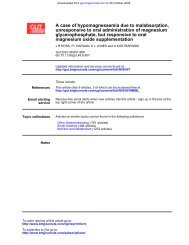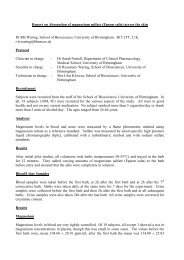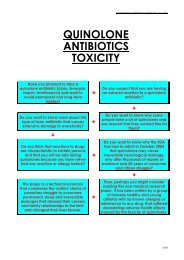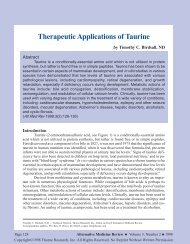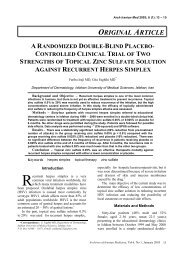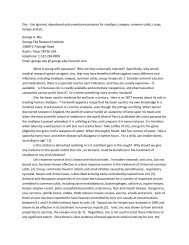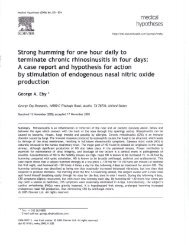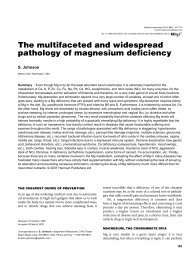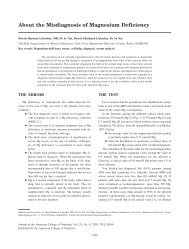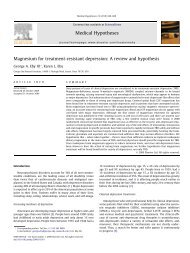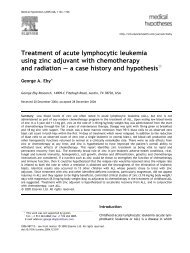Therapeutic Gallium Compounds - George Eby Research Institute
Therapeutic Gallium Compounds - George Eby Research Institute
Therapeutic Gallium Compounds - George Eby Research Institute
You also want an ePaper? Increase the reach of your titles
YUMPU automatically turns print PDFs into web optimized ePapers that Google loves.
<strong>Therapeutic</strong> <strong>Gallium</strong> <strong>Compounds</strong> 265<br />
In addition to these anti-proliferative activities, gallium is potently antiresorptive<br />
to bone mineral, appears to have anabolic (formation-stimulating)<br />
effects on bone, inhibits some T-cell and macrophage activation and has other<br />
selective immunomodulatory activities. 9<br />
14.3 <strong>Therapeutic</strong> <strong>Gallium</strong> <strong>Compounds</strong><br />
At present, only citrated gallium nitrate (Ganite TM ) is approved for therapeutic<br />
use (in the United States, for cancer-related hypercalcemia). Based on publicly<br />
available information, the only other potentially therapeutic gallium compounds<br />
that have been in clinical trials are gallium chloride, gallium maltolate<br />
and gallium 8-quinolinolate. <strong>Gallium</strong>-transferrin and a gallium–transferrin–<br />
doxorubicin conjugate have been administered to a small number of cancer<br />
patients, and several other gallium compounds have undergone preclinical<br />
testing.<br />
14.3.1 <strong>Gallium</strong> nitrate and citrated gallium nitrate<br />
Most data on the biological and therapeutic activities of gallium derive from<br />
investigations using gallium nitrate in aqueous solution. The term ‘gallium<br />
nitrate,’ however, has not been used consistently: it has been used to describe<br />
(a) chelator-free gallium nitrate solutions, employed for most of the in vitro and<br />
some of the animal studies and (b) gallium nitrate solutions containing citrate<br />
as a chelator, employed for all of the clinical studies and some of the animal<br />
studies. Chelator-free gallium nitrate solutions contain ionic gallium (mostly as<br />
the pH-dependent hydroxide species discussed previously), whereas citratecontaining<br />
solutions at neutral pH contain gallium citrate as a coordination<br />
complex. The commercially available product for injection (Ganite TM ) contains<br />
97.8 mM of both gallium and citrate at neutral pH, 61 which allows essentially<br />
all the gallium to bind to citrate, with very little gallium remaining in other<br />
forms. This solution is here referred to as ‘citrated gallium nitrate’ or ‘CGN,’<br />
whereas gallium nitrate without citrate or other chelators is abbreviated ‘GN.’<br />
Dose levels for both GN and CGN are given in terms of anhydrous gallium<br />
nitrate (Ga(NO 3 ) 3 ).<br />
In vitro and non-human in vivo studies<br />
Anti-tumor activity of GN was first reported in 1971: 62 efficacy was demonstrated<br />
against Walker 256 ascites carcinosarcoma in rats (GaCl 3 and<br />
Ga(SO 4 ) 3 18H 2 O had very similar effects), and >90% growth inhibition was


